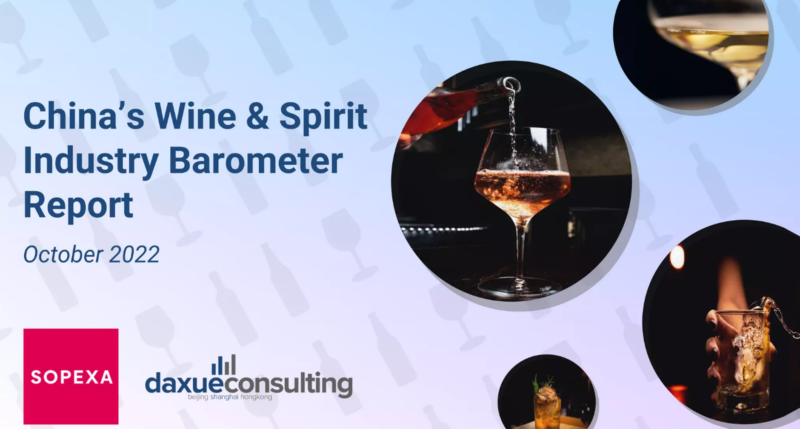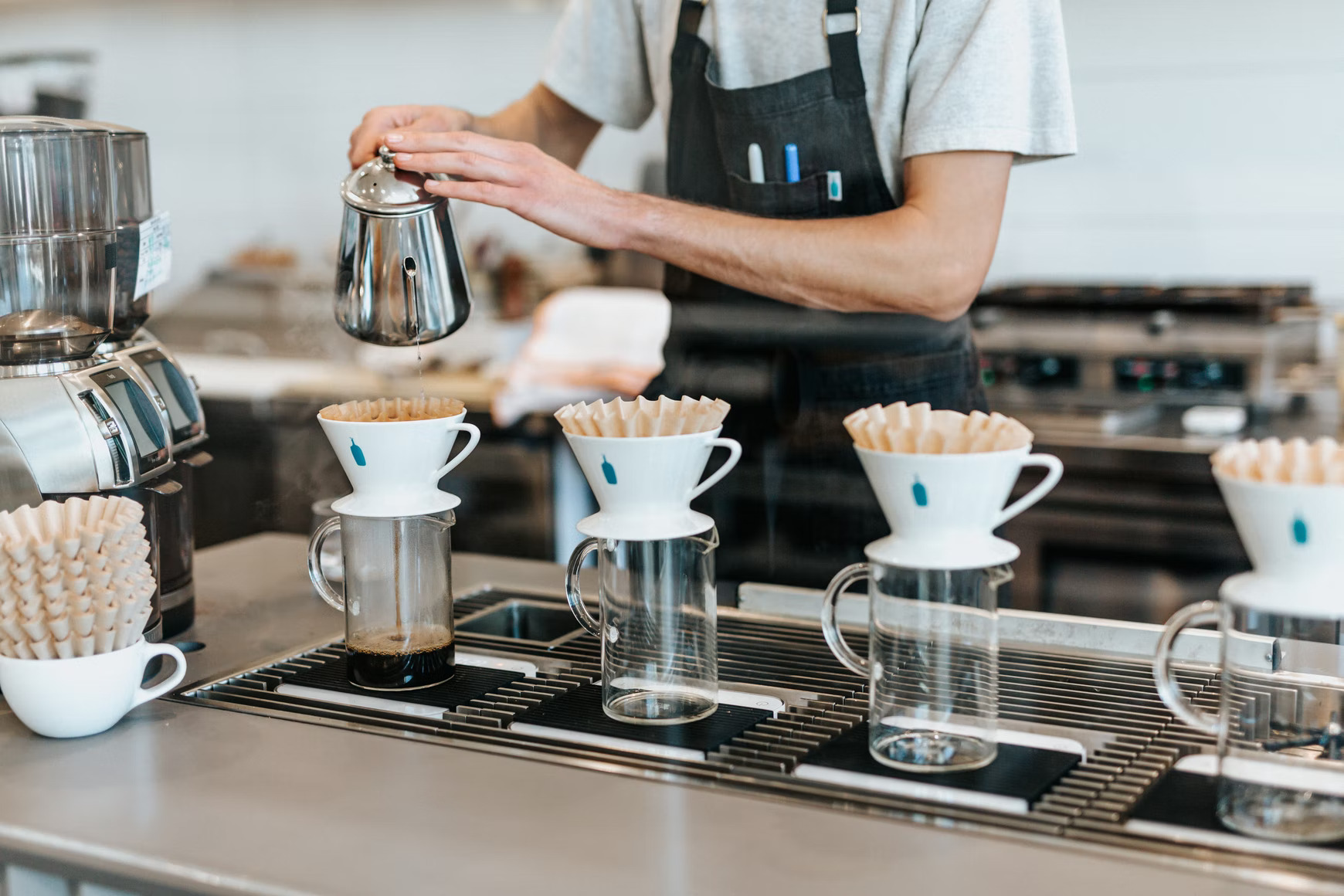Blue Bottle, a Californian-based high-end coffee chain, has made its debut in Mainland China, opening its first store in Shanghai Jing’an International Center (上海静安国际中心). The grand opening of the Auckland coffee store has attracted heaps of crowds, with customers queuing up to 7 hours outside of the two-story historic building on Chang’an Road (长安路), just to have a taste of the “Wanghong coffee” (网红咖啡, directly translated to internet-famous coffee). As of 25 February 2022, there are over 6,000 posts relating to“Blue Bottle” or “蓝瓶子咖啡” on RED (小红书, Chinese equivalent of Instagram).
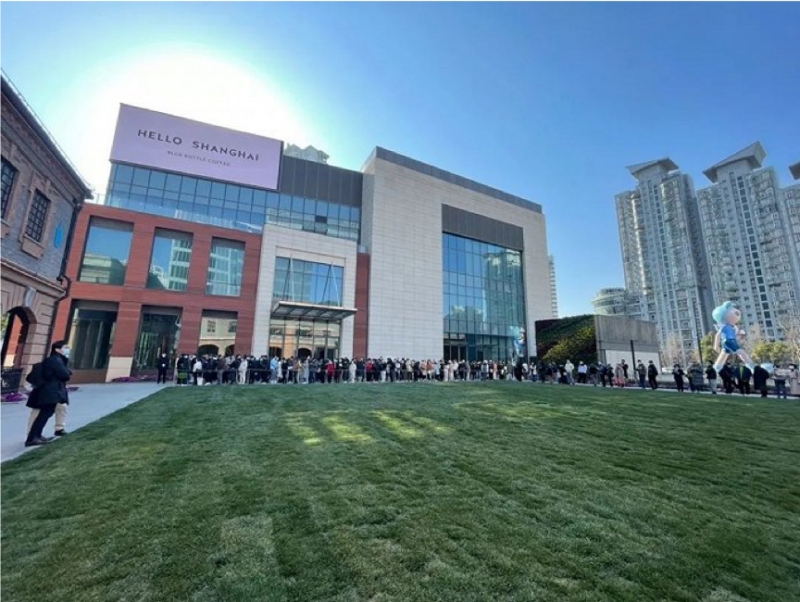
The craze over Blue Bottle’s opening in China depicts its booming coffee industry within the country as China’s coffee culture has been growing rapidly since 2000. Though China is far from being the largest coffee market, many believe that it will soon surpass many European countries as well as Japan. In comparison to the global average growth of 2%, the Chinese coffee market is, on the other hand, growing at 15% annually, according to London International Coffee Institute. Furthermore, China’s coffee shop market size has doubled since 2013, achieving a CAGR of 18%.
As of 2020, the total number of coffee shops in China has reached 108,000. Though it is dynamic, the market is still not fully saturated, according to Zhu Danpeng (朱丹蓬), a researcher from the China Brand Research Institute. The coffee market in China opens to a range of brands targeting different customers. Despite being deeply influenced by the thousand-year-tea-drinking culture, Chinese people are becoming more open to Western trends due to the expansion of Western diets and the evolving lifestyle in China.
Hot startups are threatening Starbucks’ supremacy in China
Starbucks is Struggling in China
Back in 1999, Starbucks opened its first store in China at the World Trade Building in Beijing. Most Chinese consumers only knew about instant coffee with no prior knowledge on coffee culture before the entry of Starbucks in China Starbucks in China has notably contributed to the popularization of coffee culture. As of October 2021, China is the second-largest market after the US for Starbucks in the world, with over 5,400 stores in over 200 cities in mainland China, as of February 2022. Unlike Nestlé, Starbucks targets middle to high-income consumers. Its pricing is comparatively much higher than in the US, which was critiqued by CCTV (China Central Television) back in 2013.
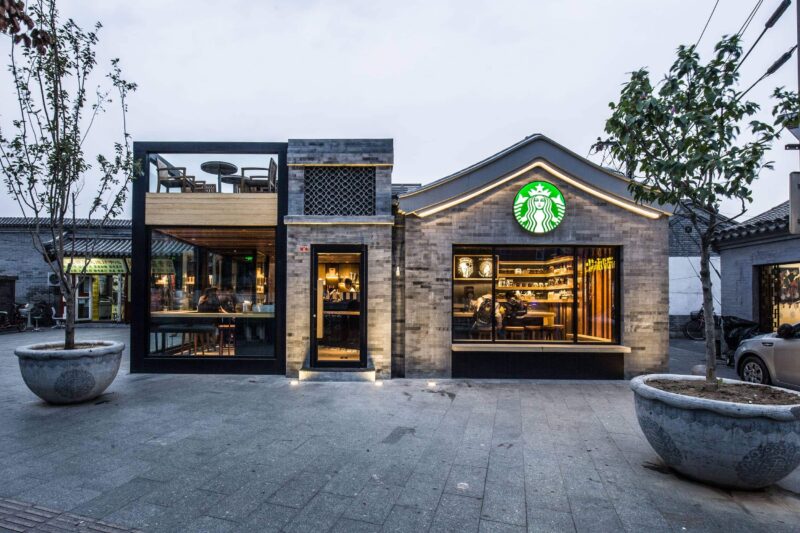
The increasing local coffee startups that provide cheaper and higher-quality options are emerging in China, thus, resulting in difficulties for Starbucks to compete with. Local coffee brand, Seesaw Coffee, has secured new A++ funding in 2022. Similarly, Manner, another local boutique brand, went from a roadside coffee shop to a nationwide sensation within a couple of years. Unlike Starbucks whose brand positioning is to provide a “Third Space”(第三空间), Manner is known for its emphasis on the quality of its coffee beans and affordable pricing, which had helped the brand in gaining its mass popularity among Chinese coffee consumers.
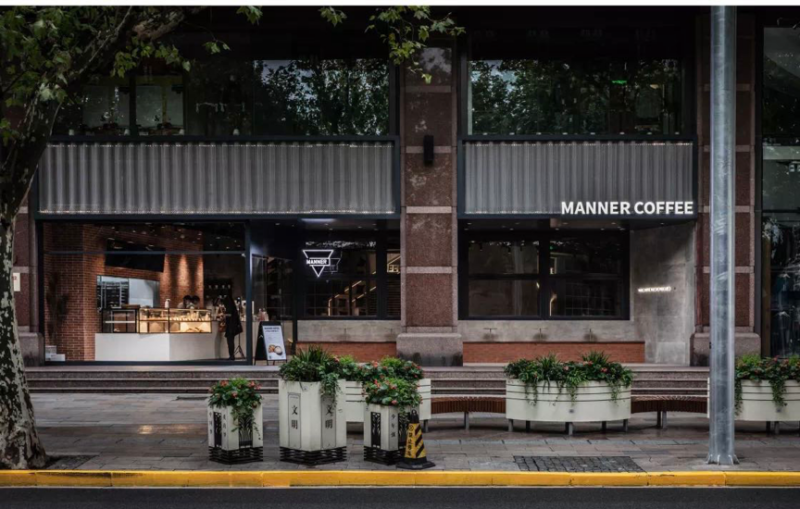
However, facing the ever-increasing competition from local Chinese coffee startups and logistic costs due to the pandemic, the Seattle-based coffee giant decided to raise the average prices for some drinks and beverages in the Chinese market to boost its sales number. It was apparently a necessary measure for Starbucks to take in raising its price. In the meantime, Starbucks’ overall gross profit is still high enough to digest some of the stress on its own. However, as a corporation that owns a lot of stores, Starbucks still hopes to increase its profit by using its brand name and scale effect to maintain a stable price on the stock market. Apart from increasing its price to boost revenue, Starbucks also opened its first Greener store (最绿门店) in Shanghai in September 2021, which hopes to refresh its brand image in China and targets consumers who are conscious of the environment and a sustainable lifestyle.
Starbucks’ Biggest Competitor in China: Luckin Coffee
Luckin Coffee, a domestic start-up coffee chain founded in October 2017 in Beijing, began opening stores at a fire pace. It only took an astonishing 18 months for Luckin Coffee to ring the bell at Nasdaq since its establishment, which broke the world’s fastest IPO record. In less than three years, Luckin Coffee managed to own 5,323 stores in China, making Starbucks’the biggest competitor in the Chinese coffee shop market so far.
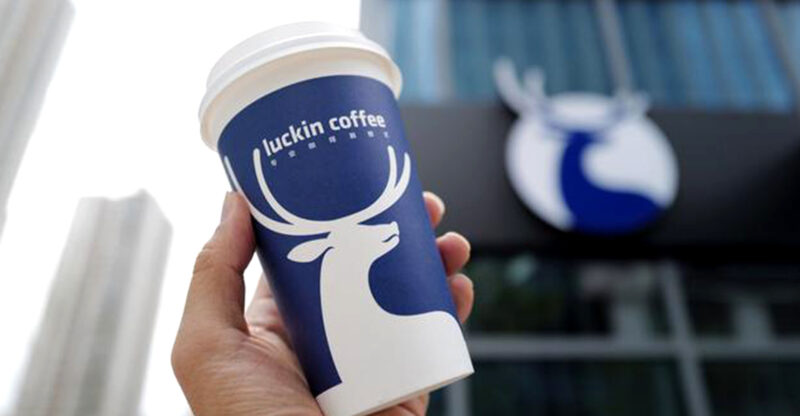
While Luckin Coffee was catching up with Starbucks in the coffee shop market in China, Luckin Coffee has threatened Starbucks’ supremacy for several reasons. One of them is the opening of a “Relax” Luckin Coffee outlet inside of the Forbidden City, where Starbucks was evicted in 2017 amid protests of western invasion. Luckin Coffee also claimed to sue Starbucks in China for its monopolistic behaviours for its publicity stunt. Meanwhile, price competition raises a nightmare for Starbucks. Luckin Coffee’s pricing is 20% lower than Starbucks in China, in addition to providing discount coupons on many platforms, such as Meituan (美团) and Dazhong Dianping (大众点评), through which Luckin have managed to attract many coffee drinks and turned them into loyal customers of the brand.
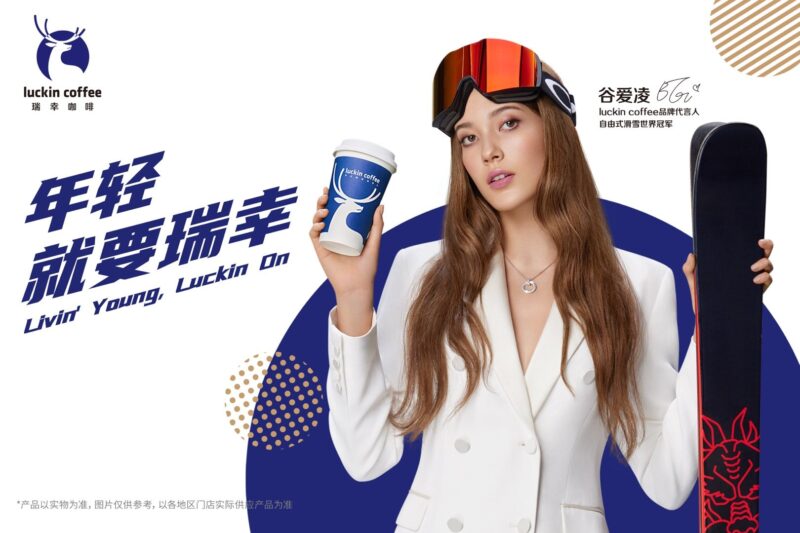
However, the home-grown coffee brand has its ups and downs. In 2020, Luckin Coffee declared bankruptcy due to its accounting fraud, which eventually led to an agreement of USD 180 million of penalty to settle the issue. Luckin’s story did not just end in April 2020 though. In fact, the capital market never gave up on Luckin. In April 2021, Luckin secured a new round of funding from previous investors, including Centurium Capital and Joy Capital. Furthermore, Luckin signed Eileen Gu as the brand spokesperson in 2021, who has won two gold medals for China at the Beijing 2022 Winter Olympics. Luckin’s choice of partnering with Eileen Gu (谷爱凌) has quickly paid off as Gu is gaining more and more popular among Chinese young people. While Starbucks is facing harsh criticism on Chinese social media, Luckin seized the opportunity to regain trust from Chinese coffee consumers.
Key Strategies to Enter the Coffee Shop Market in China
The Chinese market is far from reaching its full potential. Despite the challenges Starbucks is facing in China, Starbucks still dominates the coffee shop market in China, especially in non-metropolis areas. Carol Liu, the co-founder of Big Sur coffee in Shanghai, says the coffee market is not mature in non-metropolis areas. Consumers could not appreciate good quality coffee but were profoundly affected by brand names. Most of them still put Starbucks as their first choice for coffee. Big Sur used to have another coffee shop in Hefei, Anhui Province. Although the salaries and rent are relatively cheaper in Heifei, the Big Sur coffee shop in Hefei has still shut down.
Compared to more than 4.2 kg of annual coffee consumption for an average American, the average annual coffee consumption in China is 0.09 kg per person. Although Starbucks and Luckin Coffee helped cultivated the habit of coffee drinking in China, especially in Tier 1 cities, China still has a long way to go in terms of becoming a coffee-drinking nation. Therefore, Coffee consumption in China is far too small to be considered a mature market. Even compared to its Asian neighbor Japan, which, like China, has a long history of tea culture, the Chinese per capita coffee consumption is still much smaller. Therefore, many other foreign brands are eying this untapped potential coffee market in China. For instance, in 2019, Tim Hortons, a Canadian coffee shop brand, opened its first coffee shop in Shanghai and has expanded to over 300 stores in China by the end of 2021. In addition, Tim Hortons’ China venture plans to open another 2,750 stores by 2026.
Salt, Sugar, and Fat
Although younger Chinese people, especially those who live in Tier 1 and 2 cities, have developed coffee-drinking habits, coffee without sugar or milk, such as black coffee, Espresso, and Americanos are still not as popular among coffee consumers in China. Starbucks has added fruity taste Frappuccino and other sweet drinks to adapt to the taste of Chinese consumers. During Luckin’s most difficult time, its newly developed signature drink called Raw Coconut Latte (生椰拿铁) has recaptured the attention of Chinese consumers, which contains fruit sugar, and milk. Therefore, new entrants should not be in a rut. Innovation and localization are both necessary elements to cater to the Chinese stomach in the coffee shop market in China.
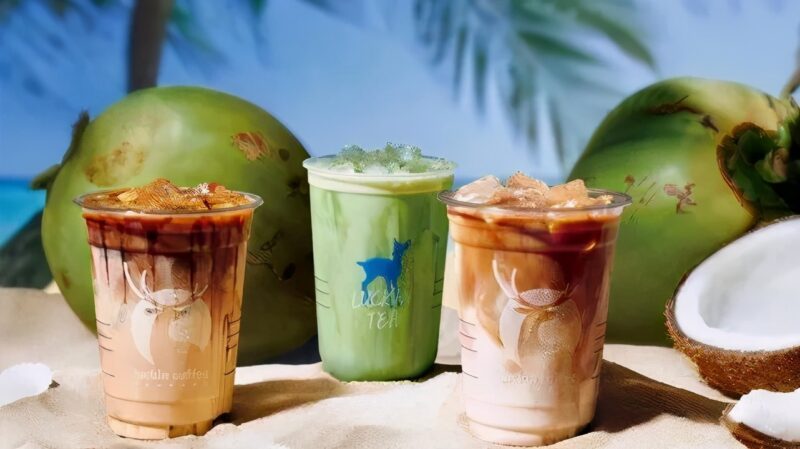
Affordable and High Quality
With the popularization of coffee culture, the coffee brewed by automatic coffee machines is not able to meet their needs anymore. More coffee consumers in China are enthusiastic about hand-drip, ice-drip, siphon, and other high-quality coffee. To meet the consumer needs, the coffee shops in China develop towards the direction of specialty cafés. Shanghai is the epitome of embracing a considerable coffee culture in China.
In general, coffee prices in China are much higher than in the US, taking Starbucks as an example, and coffee shops must maintain a balance between affordability and quality. Companies who wish to enter the Chinese coffee shop market could learn from Manner, in terms of achieving a perfect balance between affordable pricing and high-quality coffee beans. A cup of Manner drink like Americano or Latte usually costs around 10 to 15 RMB, which is almost half the price of Starbucks’ equivalent. Apart from affordability, Manner also put a lot of emphasis on the quality of its coffee beans. According to Deloitte, the overall positive evaluation ratio of Manner is around 91%, making it one of the most satisfying coffee brands among other large chained brands including Starbucks and Tims Horton.
Providing Third Space Still Works
According to market research in China, Chinese consumers consider having coffee in a coffee shop as a social event; seldom people drink coffee alone, or on the road, as they prefer to have coffee in a comfortable environment with friends. Thus, installing a coffee shop needs a more spacious and comfortable environment. Similar to Starbucks’ brand proposition, Tim Hortons, which has a fast-food-like seating in its domestic market, has adapted to comfortable and aesthetic coffee shops in China.
Read our China wine and spirit industry report
